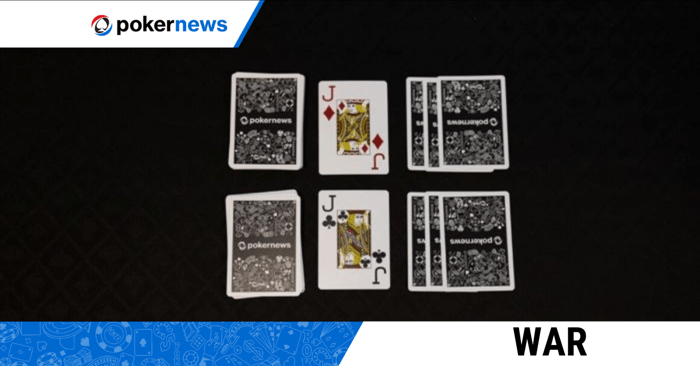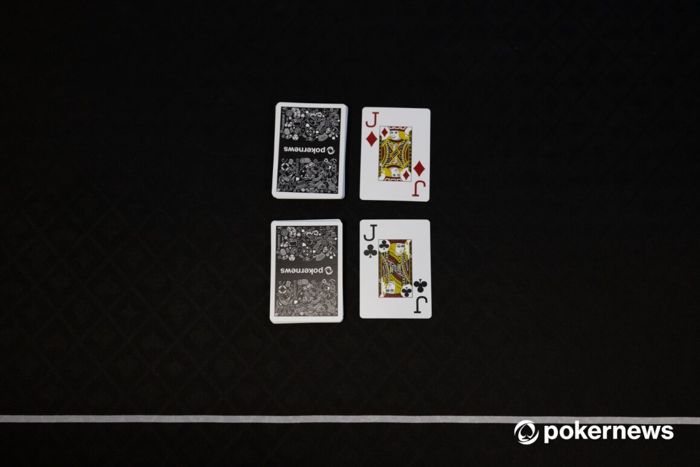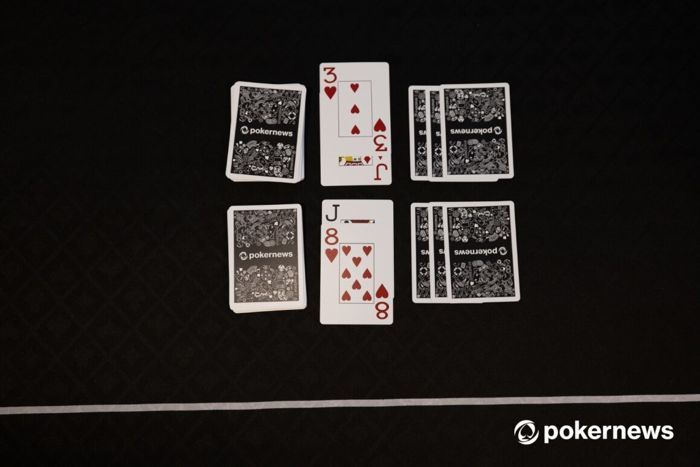Understanding the Rules of War Card Game - Comprehensive Guide

In the realm of classic card games, the War card game holds a timeless appeal. This age-old pastime, played with a standard deck of 52 cards, has garnered popularity across generations. Offering a simple yet engaging gameplay, War transcends cultural boundaries and has become a staple in the world of card gaming.
In this PokerNews comprehensive guide, we delve into the historical roots and widespread allure of the War card game. Understanding the rules is paramount, as it lays the foundation for an enjoyable experience, making this exploration of the game's intricacies a valuable resource for both novice and seasoned players alike.
Basic Rules of War Card Game
The War card game, renowned for its simplicity, is played between two players with a standard 52-card deck. To set up the game, the deck is shuffled, and the cards are evenly distributed between the players, face-down. Each player forms their own stack, keeping their cards hidden from the opponent. The objective is straightforward: to win all the cards. The game begins with both players simultaneously flipping over the top card of their stack, placing it in the center. The player with the higher-ranking card takes both cards and adds them to the bottom of their stack. In the event of a tie, a "war" is declared.

A war unfolds when two cards of equal rank are played. To initiate a war, each player places three face-down cards on top of the initially played card and then reveals a fourth card. The player with the higher-ranking fourth card wins the entire war pile.

If another tie occurs during a war, the process repeats until a decisive winner emerges. The game continues until one player possesses all the cards. It's important to note that in War, the ranking of cards is based on their face value, with aces considered the highest. This uncomplicated yet strategic gameplay makes the War card game an accessible and enjoyable activity for players of all ages.
Additional Rules and Variations
While the traditional rules of the War card game provide a solid foundation for gameplay, many enthusiasts enjoy adding their own twists through variations and house rules. One popular modification involves assigning special actions to certain cards. For example, players might decide that drawing a two allows them to steal a card from their opponent, or a seven could require the opponent to discard two cards from their stack. These custom rules inject an extra layer of strategy and unpredictability into the game, fostering a unique experience with each playthrough.
House rules also come into play during the "war" scenarios. Some players prefer a more intense version where a tie initiates a double war, requiring players to place six cards face-down before revealing a seventh card to determine the winner. Others opt for a gentler approach, allowing players to choose whether to engage in a single or double war when faced with a tie.
Additionally, players may decide to incorporate the concept of alliances, enabling them to form temporary partnerships during wars to collectively challenge a common opponent. Such variations enhance the social aspect of the game, encouraging communication and negotiation among players.
The flexibility of the War card game allows for endless customization, and players often find joy in experimenting with different rules to suit their preferences. Whether introducing unique card actions, altering war dynamics, or fostering alliances, these variations breathe new life into this timeless card game, making it a versatile and entertaining choice for gatherings and game nights.
Top 5 Tips for Smooth War Gameplay
In the pursuit of smooth and enjoyable War card game gameplay, it's imperative to steer clear of common mistakes by maintaining a vigilant awareness of the cards in play, preventing disruptions and ensuring a seamless experience. Establishing fair and transparent house rules from the beginning contributes to a harmonious gaming environment, promoting enjoyment for all players.
For those seeking an advanced and nuanced gameplay experience, incorporating strategies such as card counting, anticipating opponents' moves, and strategic card management during wars can provide a competitive edge. Flexibility and adaptability are key in navigating the unpredictable nature of War, allowing players to adjust strategies based on evolving dynamics.
While strategic depth is crucial, maintaining a lighthearted atmosphere is equally important, ensuring that War remains a simple and fun game accessible to players of all levels. This balanced approach guarantees a gaming experience that is not only smooth but also engaging for everyone involved.
Frequently Asked Questions (FAQs) - Rules of War Card Game
Are there different variations of the War card game rules?
The War card game is highly adaptable, and players often introduce variations and custom rules to add excitement. Popular modifications include assigning special actions to specific cards and altering the dynamics of the "war" scenarios.
Can you play War with a standard deck of cards?
The War card game is traditionally played with a standard 52-card deck. This simplicity contributes to its widespread appeal, making it accessible to players with a basic deck of cards.
What happens in case of a tie during a War?
When a tie occurs during a War, players enter a face-down card stacking phase. Each participant places three cards on top of the initial tie card, revealing a fourth. The player with the higher-ranking fourth card wins the entire war pile.
Are there age restrictions for playing the War card game?
War is a family-friendly game suitable for players of various ages. While there are no strict age restrictions, it is generally recommended for children aged 6 and older, ensuring an enjoyable and comprehensible gaming experience.
How long does a typical game of War last?
The duration of a War card game varies based on factors such as the number of players, house rules, and individual gameplay speed. On average, a game of War typically lasts between 15 to 30 minutes, making it a quick and engaging option for casual play.
